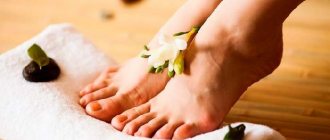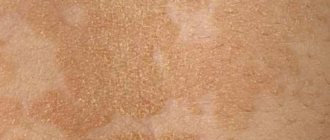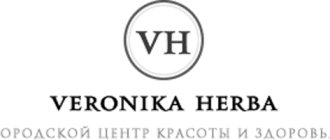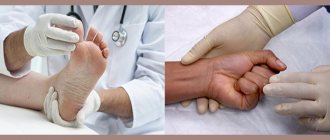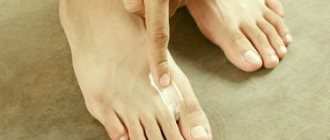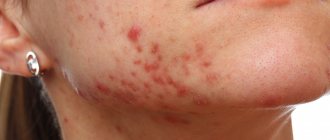Home > Dermatology > Treatment of nail fungus
- Nail fungus on hands
- Laser treatment for nail fungus
Consultation on the day of the procedure is free
Fungal infections (mycoses) of the skin and nails are one of the most common dermatological diseases in the world.
According to statistics, every fifth person on the planet, one way or another, suffers from fungal pathologies, among which a special place is occupied by nail mycoses of various etiologies.
Cost of treating nail fungus
| Onychomycosis of nails | price, rub. |
| Laser treatment of fungal nail infection - 1 minute | 700 rub. |
| Average cost of the procedure | 1 000-1 500 |
Sign up for laser treatment for nail fungus
- Full name
- Telephone
In our country, it is customary to classify mycoses into three types:
- Normotrophic mycosis
With normotrophic fungus, the color and texture of the nail changes. Characteristic stripes and spots appear on its surface. However, in this case, the shine and thickness of the nail plate remain unchanged, which is often the reason that the disease starts.
- Hypertrophic mycosis
With hypertrophic fungus, not only the color and texture of the nail plate change. There is a colossal deformation of the nail, its thickening and partial destruction. The surface becomes matte; the color ranges from pale yellow to dark green. There is no shine at all.
- Atrophic mycosis
With atrophic nail fungus, the affected part of the nail plate becomes thinner over time and is torn away from the nail bed. In this case, as with hypertrophic mycosis, the shine of the nail is completely absent, and the color ranges from pale yellow to dark green.
European classification of onychomycosis
European doctors use a different definition scheme to classify nail fungus. In particular, they classify the disease according to its location:
- Distal – the nail is affected from the side of the free edge;
- Lateral – the nail is affected from the sides;
- Proximal - the nail is affected at the base of the nail bed;
- Total – the nail plate is completely damaged.
Reasons for the development of mycoses
To date, three main types of pathogens of onychomycosis have been identified, including:
- Dermatophytes;
- Yeasts;
- Mold fungi.
Dermatophytes
Dermatophytes include various parasitic microorganisms that affect the stratum corneum of the epidermis, hair and nails. Despite the relatively low pathogenicity of this form of life, it becomes one of the main reasons for the appearance of the fungus. Mycosis of the nails, caused by dermatophytes, appears as longitudinal stripes or spots on the sides or center of the nail.
Yeasts
Yeast or fungi of the genus Candida also provoke the development of mycoses, penetrating, as a rule, either into the base of the nail or into its lateral edges. The nail plate affected by Candida fungi gradually becomes thinner, turns yellow and is torn away from the nail bed. Most often, mycosis caused by yeast fungi begins with damage to the nail bed and only then moves directly to the nail.
Molds
The most rare pathogen of nail fungus. It develops and affects the nail only against the background of an existing pathology. This type of nail mycosis is the easiest to treat, since parasitic microorganisms develop on the surface of the nail plate, changing only its color and structure.
It should be noted that the human immune system has sufficient resources to combat fungal microorganisms, one way or another, present or penetrating the body. However, the presence of various diseases, pathologies of internal organs and weakened immunity leads to the uncontrolled proliferation of fungi.
Treatment of nail fungus at Lazmed Clinic
How and when does infection occur?
Fungal infection usually occurs in the warm season. The infection penetrates the nail quickly and unnoticed by a person. This is facilitated by a number of factors, including:
- Unsatisfactory condition of nails;
- Increased sweating of hands and feet;
- Tight shoes;
- Failure to comply with hygiene rules;
- Taking antibiotics;
- Accompanying illnesses.
However, even after fungal microorganisms penetrate the nail, the body has the ability to cope with the infection by activating the immune system. If the immune system is weakened, nail fungus will begin and continue to develop.
Photos before and after laser treatment for nail fungus
Symptoms of infection
Infection with mycosis of the nails, although it occurs unnoticed, has quite pronounced symptoms. As a rule, a fungal infection localized directly in the nail plate affects the following features of the nails:
- Color
The color of a nail affected by fungus differs from the color of healthy elements. The color of the diseased nail varies depending on the type of fungal infection from yellow to blue. In addition, on the surface of the nail plate, spots and stripes may be visible that differ in color from healthy areas.
— Structure
Nail mycosis significantly affects the structural condition of the nail plate. In particular, elements affected by the fungus, depending on the type of mycosis, either thicken or, conversely, become thinner. Nails crumble and pull away from the nail bed.
“Nail fungus can be accompanied by inflammation and allergies”
In addition, fungal nail infections are often accompanied by inflammation in the nail bed. Accordingly, the following phenomena occurring in the nail bed are added directly to the symptoms of nail damage:
- Redness;
- Swelling;
- Tooth;
- Peeling of the skin.
Prevention and treatment of mycoses
Nail fungus is one of the diseases that is easier to prevent than to treat. Since the treatment of this pathology often takes a very long time and does not always lead to the expected result.
Prevention of nail fungus means eliminating factors that provoke infection. In particular:
- Compliance with personal hygiene rules;
- Wearing proper comfortable shoes;
- Maintaining hygiene rules in public places;
- Monitoring your general health.
In the event that infection does occur, it is necessary to carry out high-quality comprehensive treatment for mycosis of the nails.
Today, there are various methods of treating mycoses. However, real effectiveness can only be achieved with an integrated approach. In particular, in modern dermatology, nail fungus is usually treated by taking various antifungal drugs in combination with various local antifungal agents.
About the procedure
The Cutera neodymium laser with Laser Genesis attachment has a wavelength of 1064 nm. In its rays, the temperature of damaged tissues temporarily rises to moderate values, which leads to the destruction of not only the fungus itself, but also the mycelium, due to which a complete cure is achieved, and the likelihood of relapses is minimal.
Rehabilitation after laser treatment of fungus is not required, swelling and redness are also absent. To achieve maximum effect, a course consisting of 4-6 procedures is required. The duration of the procedure and the exact number of irradiations are calculated by our doctor during a preliminary consultation, based on the degree of tissue damage.
Laser therapy
Nail fungus can be treated with laser. The device generates a beam that penetrates inside and destroys pathogenic microorganisms. The impact is targeted, so neighboring tissues are not injured.
The procedure is prescribed to patients who are not suitable for drug therapy. Or with an advanced form of the fungus, when medications and ointments do not help.
Laser treatment does not cause severe discomfort. For patients with a low pain threshold, local anesthesia is offered.
During low-intensity therapy, a laser beam heats and disinfects the tissue under the nail plate. The fungus dies when exposed to high temperature. With high-intensity treatment, the nail plate is partially or completely removed. Doctors use this radical method in advanced cases when microorganisms grow and spread to neighboring fingers.
Laser therapy has a complex effect on the nail. The beam eliminates fungal spores and simultaneously disinfects tissues.
It is rarely possible to get rid of mycosis in one go. For mild disease, 3-4 procedures are sufficient. In an advanced case, more sessions are required. Between them they take a break of 5-6 weeks so that the tissues have time to recover.
Erbium laser
Today, the erbium ER:YAG laser is recognized as the most effective for resurfacing and fractional rejuvenation, as well as for the treatment of scars and stretch marks.
Erbium laser is an ablative laser. Ablation is a complex physical effect; during ablation, a laser beam evaporates the surface of the skin layer by layer, this leads to minimal tissue burns and coagulation of blood vessels. A special laser treatment for effective and safe treatment of scars is called laser resurfacing. It should be noted that the erbium laser allows you to work with the skin very finely. Erbium grinding is also called “cold” (although the temperature during exposure reaches 300 degrees C). Compared to a CO2 laser, the duration of the rehabilitation period after resurfacing with an erbium laser is reduced by exactly half.
Therapeutic pedicure technique
From the outside, a regular hygienic and therapeutic pedicure look the same, but they have significant differences. Not everyone knows what nail cleaning means and why it helps get rid of fungus. This is a deeper cleansing and disinfection of nails. A standard pedicure procedure consists of the following steps:
- Examination of the feet and nails, diagnosis and external identification of defects, assessment of the condition of the skin and nail plates;
- Treatment of skin with antibacterial agents;
- Applying softening oil to cuticles and feet;
- Treating all feet with a softening solution;
- The use of various files and medical devices with attachments to eliminate dead, fungus-affected, rough areas of skin and nails;
- Removing corns that cause discomfort;
- Scrubbing to remove remaining dead skin, peeling feet and nails;
- Application to the affected areas of special antifungal agents recommended by a dermatologist for this type of fungus;
- Performing a light massage to relax, improve microcirculation, and relieve heaviness in the legs.
After the procedure, the master will tell you how to care for your nails and feet at home, and what needs to be done to effectively fight the fungus. It is worth remembering that comprehensive measures are required to defeat a fungal disease. A doctor must prescribe medications and treatment. Cleaning your nails before treating fungus is more of a preparatory procedure.
Who is at risk
The faces of both pilafs are susceptible to fungal infections of the nails with the same frequency. Most often, nail plate fungus develops in the following situations:
- In older people.
- Children, especially those who are weakened and often sick. Most often they become infected with the fungus from adults.
- The fungus most often affects the nails after injuries.
- The general condition of the body plays a significant role. The fungus often develops in diabetes mellitus and endocrinopathies.
The development of fungal infections can also be caused by flat feet, wearing uncomfortable shoes, synthetic stockings and socks.
Careful foot care and timely treatment of chronic concomitant diseases will help avoid the development of the disease.
Diagnostic methods in surgery:
- Doppler in surgery
- Colonoscopy
- Angiography
- CT scan
- Gastroscopy
- MRI
- Abdominal ultrasound
- X-ray
- Endoscopy
Prices:
| Code | Name of service | Prices |
| 1 | Initial appointment | 1200 |
| 2 | Repeated appointment | 900 |
| 3 | Calling a surgeon to your home | 3500 |
| 4 | Abdominal ultrasound | 2200 |
| 5 | Ultrasound of veins and vessels | 2400 |
| 6 | Doppler 2-3 trimester | 1200 |
| 7 | Rectoscopy | 1500 |
Surgical nail removal
Radical measures became one of the first ways to combat lesions of the nail plates. Today they are used quite rarely, except in small government medical institutions. The exception is complex and advanced cases. In such situations, it is necessary to completely remove the nail plate from the bed in order to open the way for the growth of a healthy nail. Before the procedure, the patient undergoes an examination to exclude contraindications:
- poor blood clotting;
- capillary permeability and dilated veins;
- diabetes mellitus (also has a negative effect on stopping bleeding);
- intolerance to anesthesia;
- diseases of the immune system;
- short-term inflammations and infections (ARVI, sore throat).
Then the day of surgery is set. The procedure is painful, so local anesthesia is required. The operation itself is simple and goes quickly. The patient will have to go through the following procedures:
When the anesthesia wears off, the patient may experience pain and itching. Bed rest is required for the first 30 days after surgery. This is necessary so that a healthy nail grows evenly along the bed. An open wound requires daily care with dressing and medication. In the first days, bleeding is possible, so before a crust forms, it is important to prevent a new infection. After surgical removal of the nail, it is better to go to the hospital for the period of adaptation. This will save you and your family from the hassle of dressings and protect against new infections. You will always be under supervision, and if something goes wrong, the doctor will be able to react quickly. When treating at home, you need to visit the hospital once a week so that the doctor keeps the new nail plate under control. Everyone's nail growth rate is different. On average, a completely healthy plate appears in six months. This video demonstrates all the stages of the operation to remove a nail due to fungus. Children and people intolerant to the sight of blood should avoid viewing.
How to care for your nail after removal
Regardless of the removal method, it is imperative to take care of the remaining wound. This is necessary to prevent inflammatory processes and relapse of infection. Immediately after removal, the surface is disinfected again, healing and antifungal ointments are applied under a gauze bandage. Then treatment is prescribed for both external use and oral administration.
- do the dressing every day until the wound heals;
- keep the dressing sterile and dry. If it gets wet or dirty, replace it immediately;
- in the first days, strict bed rest is prescribed;
- do not put weight on the affected leg while walking;
- During rehabilitation, try not to wear shoes, wear clean socks made of well-ventilated, natural fabric.
If swelling or suppuration appears on the bed, you should urgently consult your doctor. A healthy nail does not grow as quickly as we would like. After two to three weeks, the wound will heal, and you can loosen the strict supervision a little and get prosthetics. On average, a nail grows 3 mm per month. Due to the physiological characteristics of the body, this process occurs more slowly on the legs than on the arms. Thus, the plate will grow back completely no earlier than in six months.
Symptoms
The extent of nail damage depends on the chemical structure of the nail plate and the virulence of the fungus. The disease can manifest itself:
- changes in the color and transparency of the nail,
- itching,
- loss of smoothness
- splitting of the nail or hyperkeratotic thickening,
- the appearance of roughness, fragility,
- separation of the nail plate from the nail bed.
The periungual and subungual zones may remain unchanged or become red, swollen, and affected by secondary pathogenic flora.
Local treatment
Before prescribing treatment, the doctors of our clinic will conduct a thorough mycological examination of the nail plate, develop a conservative treatment plan and, if necessary, the surgeon will remove the nail plate. Before starting treatment, the nail should be thoroughly washed and steamed.
- The affected limb is carefully treated with a soap and soda solution, and overgrown nails are cut off.
- Special topical antifungal drugs are applied - Kanizol, Mikoderil, Nizoral, Mikospor.
- Cover the top of the nail with a waterproof plaster and leave it for a day.
- After a day, the patch is removed and the affected areas are cut down. The duration of treatment can take up to one year until a healthy nail plate grows.
If the nail plate fungus is advanced in nature, our clinic performs its complete surgical removal with simultaneous conservative treatment with antifungal drugs.
Useful information about visiting a surgeon at the clinic:
- How to prepare for a surgeon's appointment
- What diseases does the surgeon treat?
- Calling a surgeon to your home
- Surgical care in the clinic
- Surgical care at home
- What symptoms should you contact a surgeon for?
- Treatment of surgical diseases
- Treatment of intestinal pathologies
- Treatment of skin surgical pathologies
- Treatment of bedsores and necrosis
- Treatment of parasitic diseases
- Treatment of inflammatory processes of soft tissues
- Treatment of diseases of the musculoskeletal system
- Diagnosis of surgical diseases



